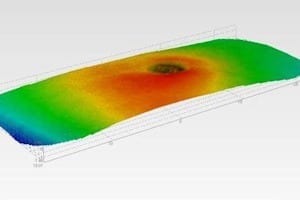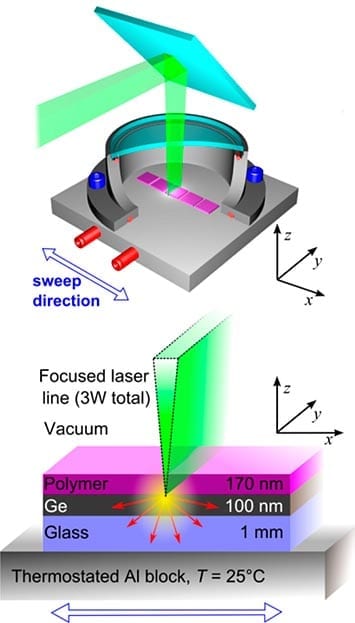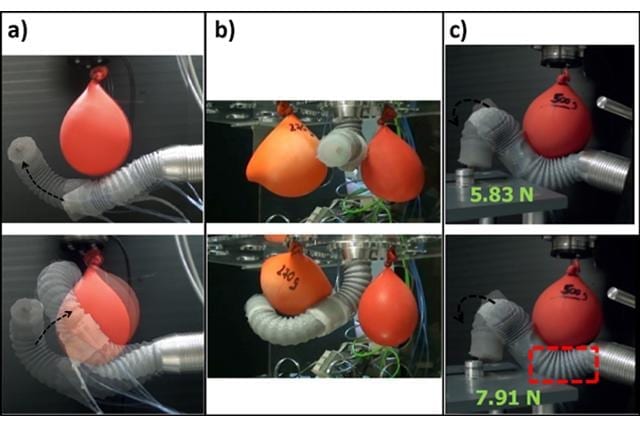
The most detailed study to date showing how electrical stimulation accelerates wound healing has been carried out in 40 volunteers by University of Manchester scientists
Skin wounds that are slow to heal are a clinical challenge to physicians all over the world. Every year, the NHS alone spends £1 billion on treating chronic wounds such as lower limb venous and diabetic ulcers. Wounds become chronic when they fail to heal and remain open for longer than six weeks.
Researchers from The University of Manchester carried out the unique human volunteer study of skin wound healing in 40 individuals with the results published in the journal PLOS ONE.
This study has provided new data supporting previous work by the team, enabling a new partnership with Oxford BioElectronics Ltd, which in collaboration with the University, will develop and evaluate devices and dressings for faster healing of wounds.
In the new research, half-centimetre, harmless wounds were created on each upper arm of the volunteers. One wound was left to heal normally while the other was treated with electrical pulses over a period of two weeks. These pulses stimulated the process through which new blood vessels form – known as angiogenesis – increasing the blood flow to the damaged area and resulting in the wounds healing significantly faster.
Now, the researchers at the University’s Institute of Inflammation and Repair led by Dr Ardeshir Bayat are to work with Oxford BioElectronics Ltd on a five-year project to develop and evaluate devices and dressings which use the same techniques to stimulate the body’s nervous system to generate nerve impulses to the site of skin repair.
Dr Ardeshir Bayat, the principal investigator from the University, is also leading on the partnership. He said: “This research has shown the effectiveness of electrical stimulation in wound healing, and therefore we believe this technology has the potential to be applied to any situation where faster wound healing is particularly desirable, such as following human or veterinary surgical wounds, accidental, or military trauma and in sports injuries.”
Dr Bayat, an international expert in the subject of wound healing added: ”This is an exciting partnership, working on a pioneering project with the potential to change substantially the way cutaneous wounds are managed in the future.”
Roly Allen, Managing Director of Oxford Bioelectronics, said: “We are delighted with our collaboration with Dr Bayat and his team at The University of Manchester. Healing of wounds, in particular chronic wounds, is a global problem and we expect, through this partnership, to lead the development of the next generation of wound repair solutions.”
Read more: New findings support University bid for bandages to enter the electronic age
The Latest on: Wound healing by electrical stimulation
[google_news title=”” keyword=”Wound healing by electrical stimulation” num_posts=”10″ blurb_length=”0″ show_thumb=”left”]
via Google News
The Latest on: Wound healing by electrical stimulation
- Why is my wound taking so long to heal?on April 18, 2024 at 5:00 pm
If a person’s wound is healing more slowly than usual, there may be an underlying reason, such as an infection, circulatory problems, diabetes, or other health issues. There are various reasons ...
- Top 8 Best Protein Supplements for Wound Healing in 2024on April 15, 2024 at 5:00 pm
The process of wound healing is intricate and demands adequate nutrition to bolster the body’s inherent healing capability. Protein is crucial in this procedure, aiding in tissue recovery and ...
- Wound warriors: How microbes influence healing and infection riskson April 6, 2024 at 5:00 pm
Study: The wound microbiota: microbial mechanisms of impaired wound healing and infection. Image Credit: A3pfamily / Shutterstock.com The skin protects the human body from the potentially harmful ...
- Neuropeptide Lacking in Diabetics Promotes Wound Healingon March 27, 2024 at 5:01 pm
They published their study, “CGRP sensory neurons promote tissue healing via neutrophils and macrophages” in the latest issue of Nature. The impacts of poor wound healing ability are ...
- Wound Healing News and Researchon March 26, 2024 at 5:00 pm
underscoring the complexity of microbial interactions in wound healing. Scientists at King's College London have discovered a new cause for asthma that sparks hope for treatment that could prevent ...
- Discovery has potential to solve the billion-dollar global cost of poorly managed wound healingon March 26, 2024 at 5:00 pm
Scientists have uncovered a key step in the wound healing process that becomes disabled in diseases like diabetes and aging, contributing to a global healthcare cost of managing poorly healing ...
- Wounds and Healing Newson March 11, 2024 at 5:00 pm
Discovery Has Potential to Solve the Billion-Dollar Global Cost of Poorly Managed Wound Healing Mar. 27, 2024 — Scientists have uncovered a key step in the wound healing process that becomes ...
- What Are Smart Bandages and How Do They Work?on December 20, 2023 at 5:18 pm
Most of us stick on a bandage when we get a scratch, cut, or burn. But this little health accessory has now been taken to the next level. Smart bandages may change the game for many of us, but how ...
- Electrical Stimulation Therapy (EST) for the treatment of non‑healing wounds for Health Care Professionals: What? Why? When? Who? Where & How?on March 27, 2019 at 3:53 am
The course is designed to provide the opportunity for physiotherapists and other health care professionals to become involved in electrical stimulation therapy (EST) for chronic non-healing wounds.
- Charging the batteries to heal wounds through PI3Kon October 8, 2014 at 2:38 pm
The authors explored the ways electric fields control wound healing, first by using an assay ... by these kinases in response to receptor stimulation are asymmetrically distributed in the ...
via Bing News










